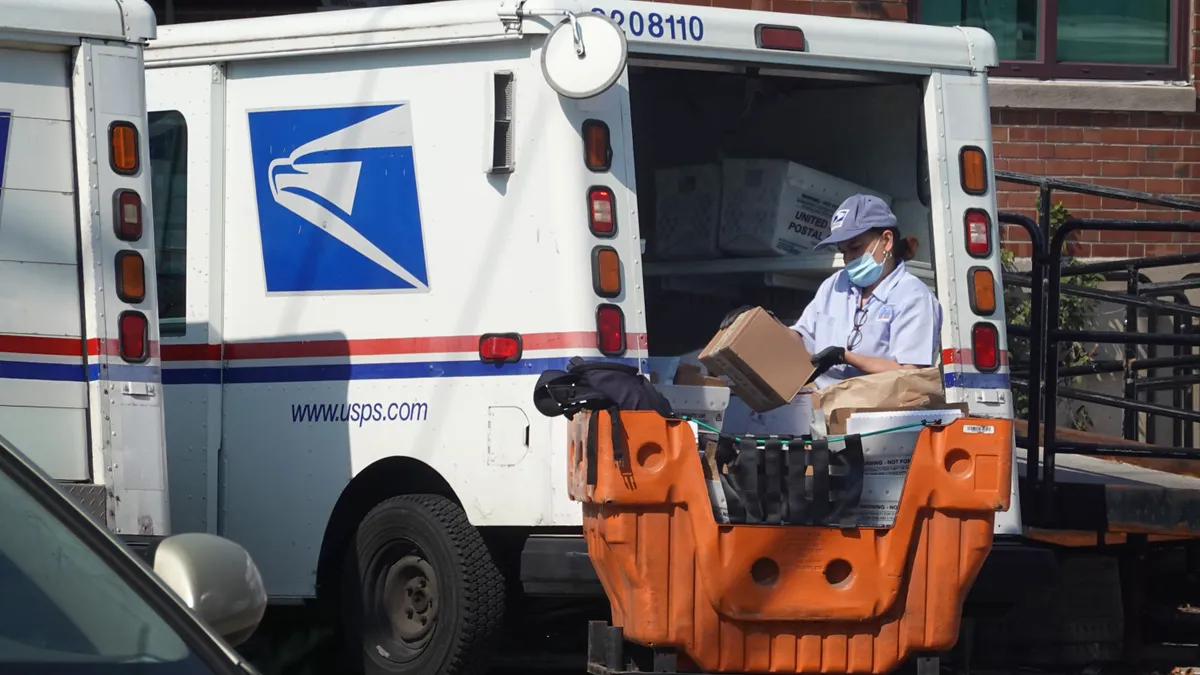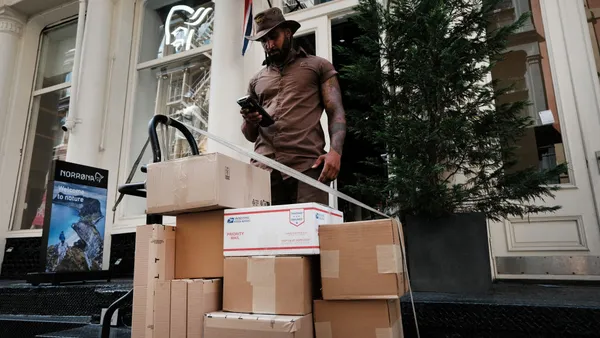The U.S. Postal Service is pausing the consolidation of mail processing operations at least until after Jan. 1, 2025, as lawmakers scrutinize the plan's impact on delivery reliability.
The agency will put the transfer of some mail processing operations at local plants throughout the country to larger regional hubs on hold, Postmaster General Louis DeJoy said in a May 9 letter to Sen. Gary Peters, D-Mich. Even after Jan. 1, the Postal Service will only proceed "at a moderated pace of implementation."
The Postal Service CEO said he hopes the pause "will work to restore confidence in the desired positive outcomes of our modernization actions are meant to achieve from both a service excellence and cost savings perspective, and at a pace of network change that is acceptable."
The network consolidation efforts have been a key piece of the Postal Service's 10-year "Delivering for America" plan to improve its financial health. By aggregating mail processing to fewer regional hubs, the agency will "achieve vitally necessary cost savings” driven by reduced transportation, DeJoy said. Estimated annual savings are expected to range from $133 million to $177 million.
The Postal Service has been considering these changes at nearly 60 of its 427 processing plants throughout the country. Lawmakers have voiced concerns about consolidation efforts impacting plants in their home states and potential — or already realized — damage to delivery reliability. Markets already in the thick of large-scale Postal Service changes have particularly struggled.
In a May 8 letter, Peters and 25 other senators told DeJoy that he should pause processing and delivery network changes, pending a study of its impacts from the Postal Regulatory Commission.
"While USPS claims these changes overall will improve service while reducing costs, there is evidence to the contrary in locations where USPS has implemented changes so far," according to the letter. "USPS must stop implementation, restore service in those areas where changes were implemented, and fully understand the nationwide effects of its plan on service and communities."
DeJoy acknowledged during a USPS Board of Governors meeting last week that the agency is "experiencing failures" amid the plan's rollout. But the Postal Service chief added that the struggles are inherent to the massive changes it is making.
"Throughout this journey, we recognize that there have been impacts to our customers, especially in regions like Atlanta, Houston, and Richmond, where transformation activities have been elevated," DeJoy said. "We apologize for these conditions and are working hard and know that we will soon be delivering the service the American people deserve."
The Postal Service's on-time delivery performance has faltered in the thick of its transformation plan. Reliability declined across all reported mail categories for the quarter that ended March 31, according to data shared during its Board of Governors meeting last week. That quarter also featured delivery challenges due to winter storms.
Postal Service falls short of delivery performance goals
Amid service issues, Board of Governors member Ronald Stroman said during the May 9 meeting that the agency should slow down network changes until service levels get closer to its 2024 targets. Once that happens, he said the agency should then phase in changes gradually.
The benefits to slowing down changes include minimizing the overall impact of service declines, allow management more time to make adjustments and give the agency more time to train employees, according to Stroman.
"At last November's open session, I said we should give the network change a fair opportunity to improve service," Stroman said. "And while that does remain true, six months later, that opportunity has yielded declining service performance. Slowing further network changes and reexamining our plans is the responsible next step."














